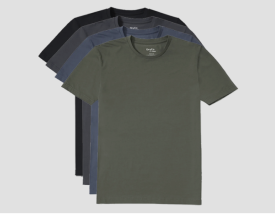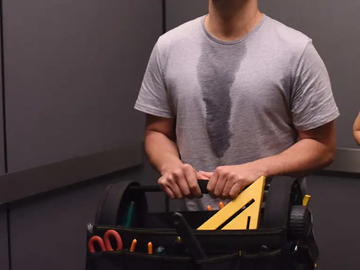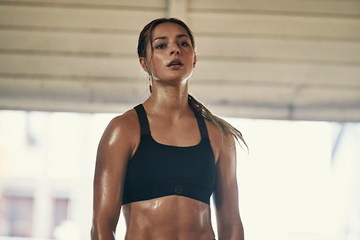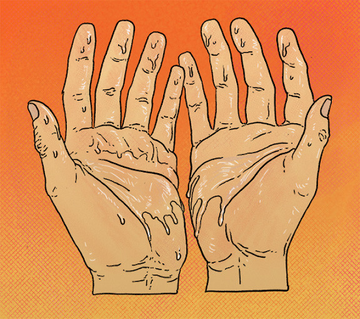When it seems like you’re the only one in your circle or office who deals with hyperhidrosis, you might need a bit of a “pick-me-up”. Reading inspiring stories of people who have overcome the condition can give you a much-needed lift in spirit. To “overcome” hyperhidrosis doesn’t mean they cured it, but the three sufferers we’re highlighting today have learned how to manage it so that it doesn’t hold them back anymore.
Jake
Jake Tansanco, who lived in The Philippines until the age of 25, first noticed he had sweaty palms in the 5th grade. He would have arm wrestles with his friends and they would frequently ask him: "Hey Jake why is your hand so sweaty?"
He had difficulty taking notes because his sheet of paper would be drenched with sweat and he would have difficulty grasping the pencil. After realizing that his condition was not the norm, he approached his doctor and dad. They both said that his condition was nothing to worry about and it would go away. It didn't.
For years he had to contend with soaked bed sheets, wet socks and shoes, and sweating immediately after showering. Driving was painful because his steering wheel would be slippery due to sweat, and work was frustrating because his keyboard and mouse would be wet.
Speaking of work, he admitted that the hardest part of it was giving presentations and meeting new people. Why? Shaking hands would make him nervous and self-conscious because of his sweaty palms. He also dealt with axillary hyperhidrosis (armpit sweating) and plantar hyperhidrosis (foot sweating). This also affected his personal life as well since he found the dating scene difficult because of self-consciousness.
Fortunately, things turned around for Jake when he decided to research his condition. He came across the International Hyperhidrosis Society’s website and began reading more about the condition. After years of receiving little help and no answers, his persistence has finally paid off.
Jake weighed his treatment options. He eliminated botox as an option because it was too expensive for him and not covered by his insurance. Surgery was off the table as well due to his concerns about the procedure. He settled on a treatment called miraDry®, a non-invasive handheld device that uses electromagnetic energy to reduce excessive sweating, especially for the underarms.
After a couple of procedures with miraDry, Jake found himself to be sweat-free with just some minor swelling as a side effect. Jake also relies on sweatproof shirts to keep him dry. He's not 100% sweat-free but now has a much better handle on his condition.
Takeaways from Jake's Story
- If hyperhidrosis is affecting your life, don't write it off as something that is just a part of you - it can be treated
- Untreated hyperhidrosis will impact your self-confidence at work and in your personal life but treating it will restore your confidence
- There are many treatment options - some will work for you while others won’t so patience may be required to find the right one
Wendy
From her early days in elementary school, Wendy suffered the negative consequences of palmar, plantar, and axillary hyperhidrosis. She described her feet as constantly being soaking and her underarms as being “uber sweaty”.
She would go on to pursue a successful career as a teacher but she acknowledged the constant wetness hover hands feet and underarms pause the challenge I know it's frustrating to her.
Wendy wanted nothing more than to “achieve a dry handshake” before an interview especially since she was looking for a role as an assistant principal. You can imagine how nerve-wracking it was for her to desire this position, but dread having to shake hands with others because of sweat.
Wendy's life changed forever on Thursday, July 8th, 2004 when she appeared on ABC’s Good Morning America to receive hyperhidrosis treatments for millions of viewers to see. In an interview with the International Hyperhidrosis Society, Wendy said:
"I never thought that my hyperhidrosis would get me on national TV. The most I hoped for was a doctor who would say, ‘"Hey there's actually a treatment for you and you can live a semi-normal life"’.
She received two treatments on the air: botox injections for her auxiliary hyperhidrosis (armpits) and iontophoresis for her palmar hyperhidrosis (palms). David Pariser, MD and founding board member of the international hyperhidrosis Society administered the treatments.
What were the results? Wendy's underarms were completely dry afterward and the excessive sweating of her hands and feet gradually improved.
Wendy had some words of encouragement for her fellow hyperhidrosis sufferers by saying:
“...not to give up, to be persistent, and to find a doctor who’s going to believe in them and to help them”.
She also admonished doctors “...to listen to the patients in front of them... there are people out there who need treatment and compassion.”
Takeaways from Wendy’s Story
- Excessive sweating doesn’t have to hold you back from pursuing your goals, especially when it’s properly managed
- Different problem areas will likely require different treatments
- Different problem areas will respond to different treatments faster and better than others
Richard
Richard Bellis wrote a personal tale of his struggles with hyperhidrosis admitting that it "has been a raging battle for as long as I can remember".
He has painful memories at school where he was teased and bullied because of his excessive sweating. He cites one example in a junior high engineering class where kids would put DIY sensors to his hands just to see the light shine, an occurrence that happened to him because of the excess sweat on his hands.
Richard said that he minimizes contact with people as much as possible avoiding handshakes, high-fives, hugs, and holding hands. Unfortunately, this has given some of his associates the impression that he lacks compassion or dislikes intimacy.
He's also had to completely revamp his wardrobe opting for t-shirts that are either white or black to hide sweat stains. Grasping objects such as a mouse or a steering wheel has also been problematic because they get drenched with sweat. He also has to be very careful about what he eats because of salty and spicy foods, in particular, trigger heavy bouts of sweating for him. Richard admits to struggling with loneliness and poor success in his romantic life because of hyperhidrosis.
However, Richard didn't give up. Frustrated by his condition, he spoke to his doctors about treatment. To start, they prescribed aluminum-based antiperspirant and a gel moisturizer but they didn't work. They merely caused irritation which led him to forfeit them altogether. He considered botox as an option, but he decided to forego it because of its cost and concerns about side effects.
Richard then pursued iontophoresis treatment. He admits to having some discomfort with it, but he has enjoyed success with the treatment. Thanks to weekly therapy sessions, he has been able to reduce his sweating to a point where he can shake someone's hands or hold a steering wheel.
He summarized his optimism by saying:
“I may be a long way from living a “dry life” but hopefully my anxieties and my loneliness will soon have less control over my life.”
Takeaways from Richard's Story
- It’s perfectly normal if the first treatment (or even the second one) doesn’t work for you as hoped
- Improvements may come gradually but surely once you find the right treatment
Hope for Hyperhidrosis Lies Ahead
Hyperhidrosis sufferers often feel like their condition is a life sentence. This is especially true for those who have had the condition since childhood. But what many suffers don't realize is that they went so long without treatment because they simply weren't aware of their condition or the treatments available to them. Speaking to your doctor to find a solution is the first step in finding relief, and it can turn your life around sooner than you realize.
Based on the stories of Jake, Wendy, and Richard, you can see that everyone who lives with this condition will have to find their own ideal treatment. You may have to experiment with different protocols, whether that means using antiperspirant or sweatproof clothing or even a minimally invasive device. Nevertheless making the effort and putting in the time to treat your hyperhidrosis will allow you to live the life you were meant to live.








